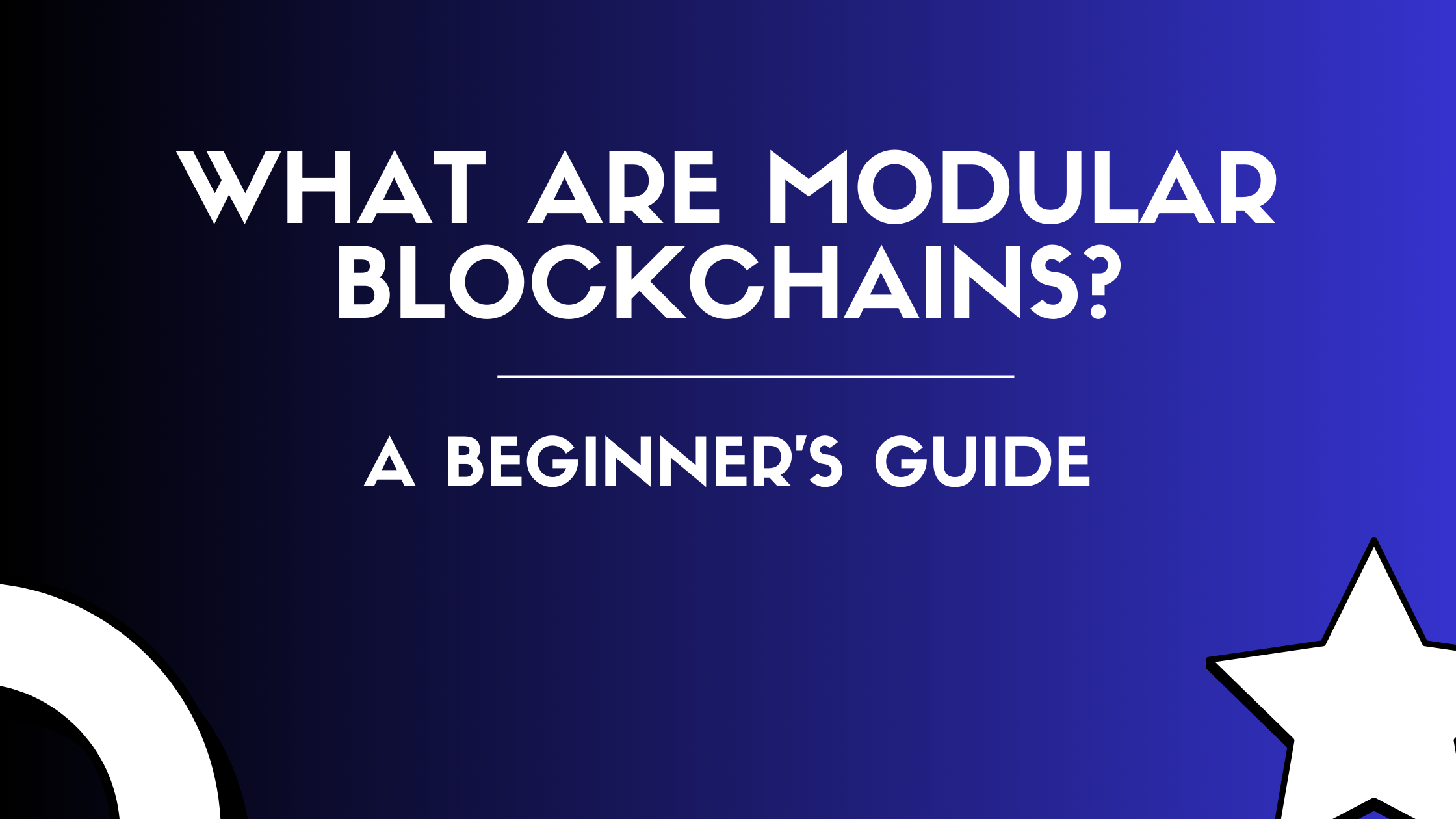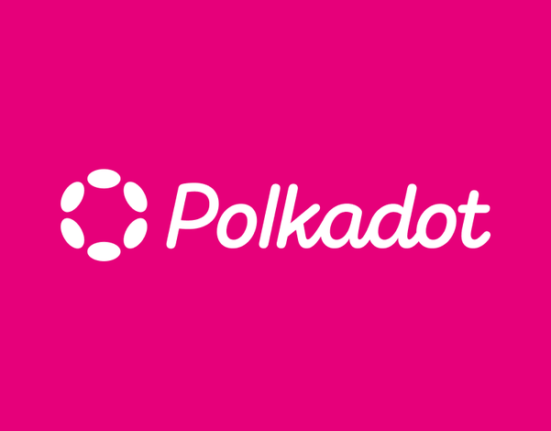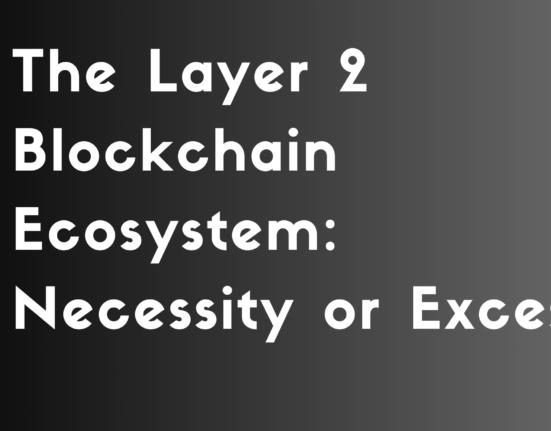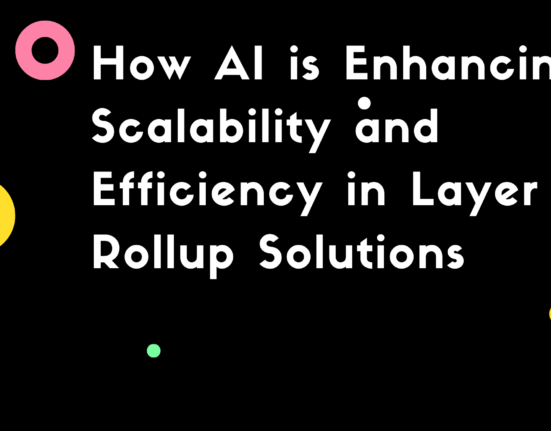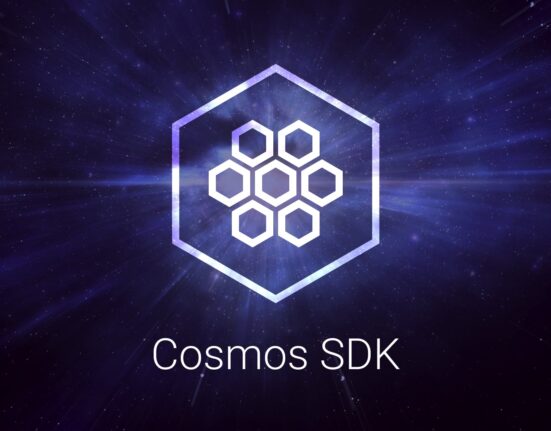Blockchain technology has come a long way since the introduction of Bitcoin in 2009. As the field has evolved, developers and researchers have continuously sought ways to improve scalability, security, and flexibility of blockchain networks. One of the most promising approaches to emerge in recent years is the concept of modular blockchain architecture.
Modular blockchain represents a paradigm shift in how we design and implement distributed ledger systems. Unlike traditional monolithic blockchains, where all core functions are tightly integrated into a single layer, modular blockchains separate different aspects of the network into distinct, interoperable modules. This approach allows for greater customization, scalability, and efficiency in blockchain systems.
At its core, modular blockchain architecture breaks down the fundamental components of a blockchain network – such as consensus, execution, data availability, and settlement – into separate layers or modules. These modules can be developed, optimized, and scaled independently, while still working together seamlessly to form a complete blockchain ecosystem.
Contents
- 1 The modular approach to blockchain design offers several key advantages:
- 2 The Evolution of Blockchain Architecture
- 3 Core Components of Modular Blockchain
- 4 Key Benefits of Modular Blockchain
- 5 Challenges and Limitations of Modular Blockchain
- 6 Prominent Modular Blockchain Projects
- 7 Comparison with Monolithic Blockchains
- 8 Use Cases and Applications
- 9 Future Outlook and Potential Impact
- 10 Conclusion
The modular approach to blockchain design offers several key advantages:
- Scalability: By separating different functions, each module can be optimized for its specific task, leading to improved overall network performance and throughput.
- Flexibility: Developers can mix and match different modules or easily swap out components to create customized blockchain solutions tailored to specific use cases.
- Interoperability: Modular design facilitates easier integration between different blockchain networks and legacy systems.
- Upgradability: Individual modules can be upgraded or replaced without affecting the entire network, allowing for more agile development and maintenance.
- Specialization: Teams can focus on developing and improving specific modules, fostering innovation and expertise in particular areas of blockchain technology.
As we delve deeper into the world of modular blockchains, we’ll explore how this innovative approach is reshaping the landscape of distributed ledger technology and paving the way for more efficient, scalable, and adaptable blockchain systems.
The Evolution of Blockchain Architecture
To fully appreciate the significance of modular blockchain architecture, it’s essential to understand the evolution of blockchain design over the past decade.
First Generation: Bitcoin and Monolithic Design
The first generation of blockchain technology, exemplified by Bitcoin, introduced the concept of a decentralized, trustless system for peer-to-peer transactions. Bitcoin’s blockchain combined all core functions – consensus, execution, data storage, and networking – into a single, monolithic layer. While revolutionary, this design had inherent limitations in terms of scalability and flexibility.
Key characteristics of first-generation blockchains:
- Single-purpose focus (e.g., cryptocurrency transactions)
- Limited throughput and scalability
- Proof-of-Work (PoW) consensus mechanism
- Tight coupling of all blockchain functions
Second Generation: Smart Contract Platforms
The second generation of blockchains, led by platforms like Ethereum, introduced the concept of programmable smart contracts. This innovation expanded the potential use cases for blockchain technology beyond simple value transfer to include complex, automated agreements and decentralized applications (dApps).
While second-generation blockchains maintained a largely monolithic architecture, they began to introduce some level of modularity, particularly in the separation of the execution layer (smart contracts) from the consensus and data storage layers.
Key advancements in second-generation blockchains:
- Programmable smart contracts
- Support for decentralized applications (dApps)
- More diverse consensus mechanisms (e.g., Proof-of-Stake)
- Increased, but still limited, scalability
Third Generation: Interoperability and Scalability Solutions
As blockchain adoption grew, the limitations of existing architectures became more apparent. Third-generation blockchain projects focused on addressing issues of interoperability between different networks and improving scalability through various means.
This generation saw the introduction of concepts such as sharding, sidechains, and layer-2 scaling solutions. These approaches began to move away from the strictly monolithic design, introducing elements of modularity to address specific challenges.
Key features of third-generation blockchains:
- Cross-chain interoperability protocols
- Layer-2 scaling solutions (e.g., state channels, rollups)
- Sharding for improved scalability
- Increased focus on energy efficiency and sustainability
Fourth Generation: Modular Blockchain Architecture
The latest evolution in blockchain design is the move towards fully modular architectures. This approach represents a fundamental rethinking of how blockchain networks are structured, breaking down the core functions into distinct, interoperable modules.
Modular blockchain architecture addresses many of the limitations of previous generations by allowing each component to be optimized independently while maintaining the ability to work together as a cohesive system.
Key aspects of modular blockchain architecture:
- Separation of consensus, execution, data availability, and settlement layers
- Plug-and-play modularity for customized blockchain solutions
- Enhanced scalability through specialized optimization of each module
- Improved upgradeability and maintenance
- Greater flexibility in addressing specific use case requirements
The transition to modular blockchain architecture represents a significant leap forward in the evolution of distributed ledger technology. By breaking free from the constraints of monolithic design, modular blockchains open up new possibilities for scalability, efficiency, and innovation in the blockchain space.
In the following sections, we’ll explore the core components of modular blockchain architecture in detail, examine its benefits and challenges, and look at some of the prominent projects leading the way in this exciting new paradigm.
Also Read: A Guide to Blockchain Rollups
Core Components of Modular Blockchain
It’s essential to break down its core components to understand the modular blockchain architecture. Unlike monolithic blockchains, where these functions are tightly integrated, modular blockchains separate them into distinct layers or modules. This separation allows for greater flexibility, scalability, and specialization. Let’s examine the primary components of a modular blockchain system:
Consensus Layer
The consensus layer is responsible for ensuring agreement among network participants on the state of the blockchain. In a modular architecture, the consensus mechanism is decoupled from other functions, allowing for more efficient and specialized consensus algorithms. This separation enables blockchain networks to adopt different consensus models without affecting other aspects of the system.
Common consensus mechanisms in modular blockchains include Proof of Stake (PoS), Delegated Proof of Stake (DPoS), and more experimental approaches like Proof of History (PoH). The modular approach allows for easier upgrades or changes to the consensus layer without disrupting the entire network.
Execution Layer
The execution layer handles the processing of transactions and the execution of smart contracts. By isolating the execution environment, modular blockchains can optimize for performance and support more complex computations without burdening the entire network.
This layer typically includes the virtual machine (VM) that runs smart contracts and processes transactions. Popular execution environments include the Ethereum Virtual Machine (EVM) and WebAssembly (WASM)-based systems. The modular design allows for the development of specialized execution environments tailored to specific use cases or programming languages.
Data Availability Layer
The data availability layer ensures that all necessary data for validating the blockchain state is accessible to network participants. In a modular architecture, this layer can be optimized for efficient data storage and retrieval, potentially leveraging off-chain solutions or data sharding techniques.
By separating data availability from other functions, modular blockchains can implement innovative solutions to reduce on-chain data storage requirements while maintaining security and decentralization. This separation is crucial for scaling blockchain networks to handle larger volumes of transactions and data.
Settlement Layer
The settlement layer is responsible for finalizing transactions and updating the blockchain’s state. In a modular architecture, this layer can be optimized for security and immutability, ensuring that once transactions are settled, they cannot be reversed or altered.
By decoupling settlement from other functions, modular blockchains can implement various approaches to transaction finality, such as probabilistic finality or absolute finality, depending on the specific requirements of the network.
Networking Layer
While often overlooked, the networking layer plays a crucial role in facilitating communication between nodes in the blockchain network. In a modular architecture, this layer can be optimized for efficient peer discovery, message propagation, and data synchronization.
The modular approach allows for the implementation of advanced networking protocols, such as gossip protocols or sharded network topologies, to improve overall network performance and resilience.
Core Components of Modular Blockchain
| Component | Primary Function | Examples |
|---|---|---|
| Consensus Layer | Ensure agreement on blockchain state | Proof of Stake, Delegated Proof of Stake |
| Execution Layer | Process transactions and smart contracts | Ethereum Virtual Machine, WebAssembly |
| Data Availability Layer | Ensure accessibility of blockchain data | Data sharding, Off-chain storage solutions |
| Settlement Layer | Finalize transactions and update state | Probabilistic finality, Absolute finality |
| Networking Layer | Facilitate node communication | Gossip protocols, Sharded network topologies |
Key Benefits of Modular Blockchain
The modular approach to blockchain architecture offers several significant advantages over traditional monolithic designs. These benefits address many of the challenges faced by earlier generations of blockchain technology and open up new possibilities for innovation and scalability.
Enhanced Scalability
One of the primary advantages of modular blockchain architecture is its potential for improved scalability. By separating different functions into distinct modules, each component can be optimized independently to handle increased load and throughput.
For example, the execution layer can be scaled horizontally by implementing parallel processing or sharding techniques, while the data availability layer can leverage off-chain storage solutions to reduce on-chain data requirements. This modular approach allows blockchain networks to achieve higher transaction throughput and support more complex applications without sacrificing decentralization or security.
Flexibility and Customization
Modular blockchain architecture provides developers and network designers with unprecedented flexibility in creating blockchain solutions tailored to specific use cases. By treating each component as a separate module, it becomes possible to mix and match different technologies and approaches to create a blockchain system that meets precise requirements.
This flexibility extends to the ability to easily upgrade or replace individual modules without affecting the entire network. For instance, a blockchain project could start with a simple consensus mechanism and later upgrade to a more sophisticated one as the network grows, all without disrupting other aspects of the system.
Improved Interoperability
The modular approach facilitates greater interoperability between different blockchain networks and with existing systems. By standardizing the interfaces between modules, it becomes easier to create bridges and communication channels between disparate blockchain ecosystems.
This interoperability is crucial for the broader adoption of blockchain technology, as it allows for the seamless transfer of assets and information across different networks. It also enables the creation of more complex, multi-chain applications that can leverage the strengths of various blockchain platforms.
Specialized Development and Innovation
Modular blockchain architecture encourages specialization and focused innovation in specific areas of blockchain technology. Development teams can concentrate on improving individual modules without needing to understand or modify the entire blockchain stack.
This specialization can lead to rapid advancements in particular aspects of blockchain technology, such as more efficient consensus algorithms, faster execution environments, or novel data availability solutions. The modular approach also makes it easier for new projects to contribute innovations to the blockchain ecosystem by focusing on specific components rather than building entire blockchain systems from scratch.
Enhanced Security through Compartmentalization
By separating different functions into distinct modules, modular blockchain architecture can enhance overall system security. Each module can be designed with specific security measures tailored to its function, and vulnerabilities in one module are less likely to compromise the entire network.
This compartmentalization also allows for more rigorous testing and auditing of individual components, potentially leading to more robust and secure blockchain systems overall.
Easier Maintenance and Upgrades
Modular blockchain architecture simplifies the process of maintaining and upgrading blockchain networks. Instead of requiring hard forks or complex coordination to implement changes, individual modules can be updated or replaced with minimal disruption to the overall system.
This ease of maintenance and upgradeability is crucial for the long-term sustainability of blockchain projects, allowing them to adapt to new requirements, fix vulnerabilities, and incorporate technological advancements more efficiently.
Cost-Effectiveness
The modular approach can lead to more cost-effective blockchain solutions by allowing organizations to optimize resources for specific functions. Rather than maintaining a monolithic system that may be overprovisioned in some areas and underprovisioned in others, modular blockchains can allocate resources more efficiently based on the specific needs of each component.
This cost-effectiveness extends to development and maintenance, as specialized teams can work on individual modules without requiring expertise across the entire blockchain stack.
Challenges and Limitations of Modular Blockchain
While modular blockchain architecture offers numerous advantages, it also presents several challenges and potential limitations that need to be addressed for widespread adoption and success.
Complexity in Design and Implementation
One of the primary challenges of modular blockchain architecture is the increased complexity in system design and implementation. Breaking down a blockchain into separate modules requires careful planning and coordination to ensure seamless interaction between components. This complexity can lead to longer development times and potentially introduce new points of failure if not managed properly.
Developers and architects must have a deep understanding of how different modules interact and affect each other. This expertise is crucial for creating efficient and secure modular blockchain systems, but it may be in short supply, especially in the early stages of adoption.
Interoperability Challenges
While modular design can enhance interoperability, ensuring smooth communication and data transfer between different modules and across various blockchain networks remains a significant challenge. Standardization of interfaces and protocols is essential but can be difficult to achieve in a rapidly evolving technological landscape.
Moreover, as different projects develop specialized modules, there’s a risk of fragmentation in the ecosystem, potentially leading to compatibility issues and increased complexity for developers trying to build cross-chain applications.
Performance Overhead
The separation of blockchain functions into distinct modules can introduce additional performance overhead due to the need for inter-module communication and coordination. While individual modules may be optimized for their specific tasks, the overall system performance could potentially be lower than a well-designed monolithic blockchain in certain scenarios.
Minimizing this overhead requires careful optimization of inter-module communication protocols and data transfer mechanisms, which adds another layer of complexity to the development process.
Security Considerations
While modular architecture can enhance security through compartmentalization, it also introduces new security considerations. The interfaces between modules become potential attack vectors that need to be carefully secured. Ensuring the integrity of data as it moves between different modules and maintaining a consistent security model across the entire system can be challenging.
Additionally, the ability to upgrade or replace individual modules, while beneficial, also introduces the risk of incompatibilities or vulnerabilities if not managed properly. Rigorous testing and security audits are essential for each module and the system as a whole.
Governance and Coordination
Modular blockchain systems may face challenges in governance and coordination, especially when different teams or organizations are responsible for developing and maintaining separate modules. Deciding on upgrades, changes, or the introduction of new modules can become complex, potentially leading to disagreements or fragmentation within the ecosystem.
Establishing effective governance mechanisms that balance the needs of different stakeholders while maintaining the integrity and coherence of the overall system is crucial for the long-term success of modular blockchain projects.
Resource Allocation and Economic Models
Designing appropriate economic models and resource allocation mechanisms for modular blockchains can be more complex than for monolithic systems. Each module may have different resource requirements and contribute differently to the overall value of the network. Determining fair compensation for module developers, operators, and other stakeholders while ensuring the economic sustainability of the entire ecosystem presents unique challenges.
Prominent Modular Blockchain Projects
Despite these challenges, several projects are actively developing and implementing modular blockchain architectures. These initiatives are pushing the boundaries of blockchain technology and demonstrating the potential of the modular approach.
Polkadot
Polkadot is one of the most prominent examples of a modular blockchain ecosystem. Developed by the Web3 Foundation, Polkadot uses a sharded multichain network that allows for parallel processing of transactions across multiple chains (called parachains). Each parachain can be optimized for specific use cases while benefiting from the shared security of the main Polkadot relay chain.
Key features of Polkadot:
- Shared security model
- Interoperability between parachains
- Customizable blockchain implementation
- Cross-chain message passing
Cosmos
The Cosmos network, often referred to as the “Internet of Blockchains,” is another significant player in the modular blockchain space. Cosmos provides a framework for building interoperable blockchain networks using its Tendermint consensus engine and the Inter-Blockchain Communication (IBC) protocol.
Key features of Cosmos:
- Modular SDK for building custom blockchains
- Inter-Blockchain Communication protocol
- Shared security through interchain staking
- Flexibility in consensus mechanisms
Avalanche
Avalanche is a high-performance, scalable blockchain platform that utilizes a novel consensus protocol and a modular architecture. It allows for the creation of custom, application-specific blockchains (called subnets) that can interact with each other and the main Avalanche network.
Key features of Avalanche:
- High throughput and low latency
- Subnet architecture for custom blockchains
- Flexible virtual machine support
- Cross-subnet atomic transactions
Celestia
Celestia is a modular blockchain network that focuses specifically on the data availability layer. It aims to provide a scalable data availability solution that can be used by other blockchain networks, enabling them to achieve higher throughput and efficiency.
Key features of Celestia:
- Optimized data availability layer
- Light client data availability sampling
- Compatibility with various execution environments
- Potential to enhance scalability for existing blockchains
Comparison with Monolithic Blockchains
To better understand the implications of modular blockchain architecture, it’s useful to compare it directly with traditional monolithic blockchains. This comparison highlights the strengths and weaknesses of each approach and illustrates why modular design is gaining traction in the blockchain community.
Modular vs. Monolithic Blockchain Comparison
| Aspect | Modular Blockchain | Monolithic Blockchain |
|---|---|---|
| Scalability | Higher potential scalability through independent optimization of modules | Limited by the capacity of the least scalable component |
| Flexibility | Easily customizable and upgradable by swapping or modifying individual modules | Changes often require consensus from the entire network and can be difficult to implement |
| Interoperability | Enhanced interoperability through standardized interfaces between modules | Often requires additional layers or protocols for cross-chain communication |
| Complexity | Higher complexity in design and implementation | Simpler architecture but potentially more complex codebase |
| Development | Allows for specialized development of individual components | Requires broad expertise across all aspects of blockchain technology |
| Security | Potential for enhanced security through compartmentalization | Security depends on the integrity of the entire system |
| Performance | May introduce overhead due to inter-module communication | Potentially faster performance for specific use cases |
| Governance | Can be more complex, requiring coordination across multiple components | Often more straightforward, with decisions affecting the entire network |
| Resource Utilization | More efficient resource allocation for specific functions | May lead to over-provisioning of resources for some functions |
| Adoption Curve | Steeper learning curve for developers and users | More established ecosystem and developer tooling |
This comparison illustrates that while modular blockchains offer significant advantages in terms of scalability, flexibility, and customization, they also introduce new challenges in terms of complexity and coordination. The choice between a modular and monolithic approach depends on the specific requirements of the project and the trade-offs that developers and stakeholders are willing to make.
As the blockchain ecosystem continues to evolve, it’s likely that we’ll see a convergence of these approaches, with monolithic blockchains adopting more modular elements and modular systems becoming more integrated and user-friendly. This evolution will drive innovation and help blockchain technology meet the diverse needs of various industries and use cases.
Use Cases and Applications
The flexibility and scalability offered by modular blockchain architecture open up a wide range of potential use cases and applications across various industries. Here are some key areas where modular blockchains are making significant impacts or show promising potential:
Decentralized Finance (DeFi)
Modular blockchains are particularly well-suited for the complex and rapidly evolving world of decentralized finance. The ability to optimize different components independently allows for the creation of more efficient and scalable DeFi protocols.
- High-throughput trading platforms: By separating execution and settlement layers, modular blockchains can support high-frequency trading with near-instant finality.
- Cross-chain asset management: The enhanced interoperability of modular systems facilitates easier management of assets across multiple blockchain networks.
- Customized financial products: The flexibility of modular design allows for the creation of tailored financial instruments and protocols to meet specific market needs.
Enterprise Blockchain Solutions
For enterprises looking to leverage blockchain technology, modular architectures offer the ability to create customized solutions that integrate with existing systems while maintaining high performance and security.
- Supply chain management: Modular blockchains can be optimized for tracking and verifying goods across complex supply chains, with different modules handling various aspects such as provenance, logistics, and payments.
- Identity management: Separate modules for identity verification, data storage, and access control can create more robust and flexible identity management systems.
- Regulatory compliance: Customizable modules can be designed to meet specific regulatory requirements in different jurisdictions or industries.
Internet of Things (IoT)
The scalability and customization options of modular blockchains make them ideal for handling the vast amounts of data generated by IoT devices.
- Edge computing integration: Modular designs can incorporate specialized modules for processing data at the edge, reducing latency and bandwidth requirements.
- Device-specific chains: Custom blockchain modules can be created for different types of IoT devices, optimizing for their specific needs and capabilities.
- Secure data marketplaces: Modular architectures can facilitate the creation of decentralized marketplaces for IoT data, with separate modules handling data validation, access control, and monetization.
Gaming and Virtual Worlds
The gaming industry and emerging metaverse platforms can benefit significantly from the scalability and interoperability of modular blockchains.
- In-game economies: Custom modules can be designed to handle in-game transactions, asset ownership, and trading with high throughput and low latency.
- Cross-game asset portability: The enhanced interoperability of modular systems makes it easier to create standards for transferring digital assets between different games or virtual worlds.
- Scalable virtual world infrastructure: Modular blockchains can provide the backbone for large-scale virtual environments, with different modules handling aspects like user interactions, asset rendering, and economic transactions.
Public Sector and Governance
Modular blockchain architectures can offer innovative solutions for government services and public sector applications.
- Digital identity systems: Customizable modules for identity verification, data protection, and access control can create more secure and efficient national ID systems.
- Voting systems: Separate modules for voter registration, vote casting, and vote tallying can enhance the security and transparency of electronic voting platforms.
- Interagency data sharing: Modular designs can facilitate secure and efficient data sharing between different government agencies while maintaining appropriate access controls.
Future Outlook and Potential Impact
As modular blockchain technology continues to evolve and mature, its impact on the broader blockchain ecosystem and beyond is likely to be significant. Here are some key trends and potential developments to watch:
Increased Adoption and Standardization
As more projects demonstrate the benefits of modular architecture, we can expect to see increased adoption across the blockchain industry. This growth will likely lead to the development of standards and best practices for modular blockchain design, making it easier for new projects to enter the space and for existing projects to interoperate.
Standardization efforts may focus on areas such as:
- Interface protocols between different modules
- Data formats for cross-chain communication
- Security standards for module development and integration
Emergence of Specialized Module Providers
The modular approach may give rise to a new ecosystem of specialized service providers focusing on developing and maintaining specific blockchain modules. This specialization could lead to rapid innovation and improvement in individual components of blockchain technology.
We might see companies or projects specializing in:
- High-performance consensus algorithms
- Scalable data availability solutions
- Advanced execution environments for smart contracts
- Secure and efficient networking protocols
Integration with Traditional Systems
The flexibility of modular blockchains will likely facilitate easier integration with existing business systems and legacy infrastructure. This integration could accelerate the adoption of blockchain technology in traditional industries and enterprises.
Potential areas of integration include:
- Enterprise resource planning (ERP) systems
- Financial trading platforms
- Supply chain management software
- Identity and access management systems
Advanced Cross-Chain Applications
As interoperability improves, we can expect to see more sophisticated cross-chain applications that leverage the strengths of different blockchain networks. These applications could create new possibilities for decentralized finance, digital asset management, and complex business processes.
Examples might include:
- Multi-chain decentralized exchanges
- Cross-chain lending and borrowing platforms
- Interoperable smart contract ecosystems
Evolution of Governance Models
The modular nature of these blockchain systems may lead to the development of new governance models that balance the needs of different stakeholders across various modules. We might see the emergence of federated governance structures or new forms of decentralized autonomous organizations (DAOs) specifically designed for managing modular blockchain ecosystems.
Potential governance innovations:
- Module-specific voting mechanisms
- Cross-module coordination protocols
- Incentive structures for module developers and maintainers
Impact on Blockchain Scalability
Modular blockchain architectures have the potential to significantly address the scalability challenges that have long plagued blockchain networks. By allowing different aspects of the system to scale independently, modular designs could pave the way for blockchain networks capable of handling global-scale applications with millions of users.
This improved scalability could enable:
- Mainstream adoption of blockchain-based payment systems
- Large-scale decentralized social media platforms
- Global supply chain tracking and management systems
Conclusion
Modular blockchain architecture represents a significant leap forward in the evolution of distributed ledger technology. By breaking down the monolithic structure of traditional blockchains into discrete, interoperable modules, this approach offers unprecedented flexibility, scalability, and potential for innovation.
The benefits of modular design – including enhanced scalability, customization options, and improved interoperability – position it as a promising solution to many of the challenges faced by current blockchain systems. However, the increased complexity and coordination required for modular systems also present new challenges that must be addressed as the technology matures.
As we’ve seen, numerous projects are already leveraging modular architectures to create more efficient and adaptable blockchain networks. These initiatives are paving the way for a new generation of blockchain applications across various industries, from decentralized finance and enterprise solutions to gaming and public sector services.
Looking ahead, the continued development and adoption of modular blockchain technology are likely to have far-reaching implications for the broader blockchain ecosystem and beyond. As standards emerge, specialized services evolve, and integration with traditional systems improves, modular blockchains could play a crucial role in bringing blockchain technology into the mainstream.
While challenges remain, the potential of modular blockchain architecture to address long-standing issues in scalability, flexibility, and interoperability makes it a compelling area for continued research, development, and investment. As the technology progresses, we can expect to see increasingly sophisticated and powerful blockchain systems that leverage the strengths of modular design to create new possibilities for decentralized applications and services.
In conclusion, modular blockchain architecture represents not just an evolutionary step, but potentially a revolutionary approach to building the decentralized systems of the future. Its impact on the blockchain industry and beyond is likely to be profound, shaping the way we think about and implement distributed ledger technology for years to come.

Raksha, a seasoned journalist, specializes in crafting insightful narratives on blockchain and AI developments. With a keen eye for innovation, she distills complex topics into accessible stories, providing readers with a clear understanding of the dynamic intersection between these transformative technologies.

